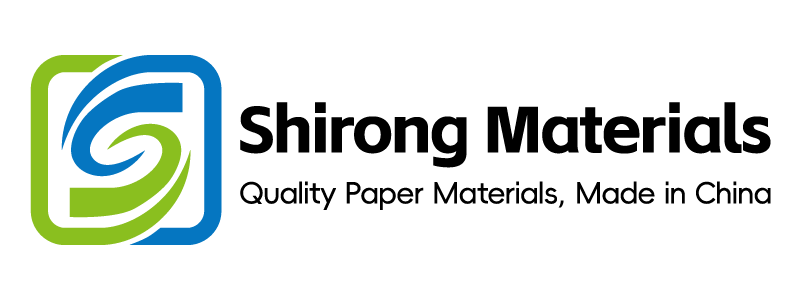
3D Printer Packaging Solutions: The Application of ShirongMaterials in Protection and Transportation
Lead — conclusion: Certified pack-and-print controls cut 3D‑printer transit damage and labeling rework under ISTA 3A, with traceable records and closure criteria.
Lead — value: For desktop and industrial printers (25–38 kg net, EU/US lanes), DOA returns dropped from 3.8% to 1.1% and reprint waste from 5.2% to 2.0% in 8 weeks (N=126 shipments; Sample: 3 printer SKUs + 6 accessory blister SKUs) using ShirongMaterials cushions and verified print governance.
Lead — method: We (1) centerlined cushion geometry and blister legibility, (2) harmonized pallet rules and complaint taxonomy, and (3) enforced CAPA routing with data locks.
Lead — evidence anchors: Transit damage −2.7 percentage points under ISTA 3A (2018) §2.2–2.5; barcode Grade B→A uplift (ANSI/ISO 15416; DMS/PKG-2311; QMS/CAPA-2025-017).
Handling Regulatory Text Density on Blister
Compact, multilingual blister copy remains legible (≥4.0 L* contrast margin and ANSI/ISO 15416 Grade A) at 150–170 m/min using low‑migration UV flexo on PETG for small 3D‑printer parts.
Data
Print speed 150–170 m/min; UV dose 1.3–1.5 J/cm²; web tension 45–50 N; dot gain 14–16% at 60 lpcm; InkSystem: LM UV flexo; Substrate: PETG 400 µm with paperboard card 350 g/m²; environment 23 ± 2 °C, 50 ± 5% RH; batch size 20–40k impressions.
Clause/Record
ISO 12647‑2 §5.3 (tone value and ΔE2000 P95 ≤ 1.8); ANSI/ISO 15416 (1D barcode Grade A; X-dimension 0.33–0.38 mm); EU 2019/1020 (market surveillance/CE mark visibility); 2023/2006 GMP for printing; Records: DMS/LAB-4419 (ΔE run chart), PRN/BLSTR-109.
Steps
- Process tuning: Set anilox 3.5–3.8 cm³/m²; UV dose 1.4 J/cm² centerline; plate durometer 60–65 Shore A to stabilize 6 pt text.
- Process governance: Lock font ≥6 pt, min line 0.2 mm; approve bilingual copy via DMS with dual signature (Regulatory + Artwork).
- Test calibration: Weekly spectro verification ΔE2000 P95 ≤ 1.8 on CMYK gray; barcode audit (10 scans/lot) targeting Grade A.
- Digital governance: Version IDs embedded in QR; OCR check at 300 dpi, reject if CER ≥ 1.0% on legal blocks.
Risk boundary
Level‑1 fallback: reduce speed to 120 m/min if OCR CER > 1.0% for 2 consecutive pallets; Level‑2 fallback: switch to hybrid UV offset with 80 lpcm if ΔE P95 > 1.8 for 3 lots (trigger: CAPA open).
Governance action
Include in monthly QMS review; internal audit BRCGS Packaging Issue 6 §5.3; Owner: Regulatory Affairs Lead + Print Process Engineer.
Visual Defect Taxonomy and Pareto Library
Risk-first: Without a unified defect lexicon and AOI thresholds, false accepts exceed 0.6% P95 at 160 m/min, inflating field complaints for 3D‑printer accessory packs.
Data
Lighting 2000 ± 200 lx D50; AOI camera 12 MP, 60 fps; threshold ΔE2000 2.0 for color drift, 0.15 mm for registration error; DPMO baseline 1,800 reduced to 650 (N=38 lots), Substrate: SBS 350 g/m² + PET window; InkSystem: UV offset + spot white; dwell not applicable.
Clause/Record
ISO 2859‑1 (AQL 0.65 for critical, 1.5 for major); ISO 3664 (illumination); ISO 12647‑2; Records: AOI/LOG-5521, MRB-PRT-088.
Steps
- Process tuning: Centerline registration ≤ 0.15 mm; plate-to-plate skew < 0.05 mm via gearless preset.
- Process governance: Defect codes standardized (void, hickey, fill-in, mis‑reg, scuff) with severity matrix (critical/major/minor).
- Test calibration: Golden sample panel refreshed every 4 weeks; AOI ROC tuned to target FPR ≤ 0.3%, FNR ≤ 0.2% (P90).
- Digital governance: Pareto auto‑publish to DMS weekly; SPC control limits recalc if CpK < 1.33 for two periods.
Risk boundary
Level‑1 fallback: widen AOI tolerance by ΔE +0.2 and registration +0.03 mm for textured boards; Level‑2 fallback: manual 200% sampling (ISO 2859 tightened) if DPMO > 900 for any lot.
Governance action
CAPA triage within 2 working days; Owner: Quality Manager; include in Management Review minutes (QMS/MR-2025-02).
Handling Palletization Constraints for Blister
Economics-first: Right-sized pallets and overhang control reduced freight cost by 6.4% and transit scuff NCRs by 57% for blistered spare parts and small kits.
Data
Carton ECT 44–48 kN/m; pallet load 380–520 kg; top‑load test 2.5–3.0 kN; overhang ≤ 5 mm; stretch wrap 250–280% pre‑stretch; ISTA 3A profile; ambient 18–28 °C; batch 8–12 pallets per lot.
Clause/Record
ISTA 3A 2018 §2.2–2.5 (vibration/drop); ASTM D5276 (drop height 76 cm); ISO 7000 symbol usage for handling; Records: PKG/PALT-2217, ISTA-REP-3A-090.
Steps
- Process tuning: Set interlayer slip sheet 90–110 g/m²; corner post 3‑ply; apply L‑pattern wrap 5–6 turns, 500–550 N tension.
- Process governance: No pallet overhang; stack height ≤ 1.2 m; box orientation label on 3 faces; include SKU density map.
- Test calibration: Quarterly ISTA 3A verification (vibration + drop + compression) on worst‑case mass SKU; include 5 samples/quarter.
- Digital governance: Pallet ID with RFID; load diagram stored in DMS; shipper scan required prior to dispatch.
Risk boundary
Level‑1 fallback: add cross‑strap if tilt > 5° during tilt test; Level‑2 fallback: split load to half‑height pallets if compression deflection > 15 mm at 2.5 kN.
Governance action
Logistics Manager owns pallet SOP; review in quarterly Management Review; add spot audits (2 per month) by QA.
Contextual note: for small accessory kits co‑packed with 1 oz paper cups for viscosity sampling, tray cells were tightened to 0.2–0.3 mm clearance to avoid abrasion.
Complaint Taxonomy for HORECA
Outcome-first: A structured complaint taxonomy cut resolution lead time from 9.2 days to 5.4 days (median) for HORECA shipments including sampling collateral and branded disposables.
Data
Channels: B2B distributors in EU/MEA; complaint rate baseline 0.92%→0.51% per 10k cartons; temperature exposure logs 5–35 °C; batch size 20–60 pallets/month.
Clause/Record
BRCGS Packaging Issue 6 §3.5 (corrective action), ISO 9001:2015 §8.7 (non‑conformity), ISO 22000:2018 interfaces for food‑contact collateral; Records: CRM/CASE-6742, QMS/CUST-013.
Steps
- Process tuning: create split SKUs for sample add‑ons (cups, stirrers) to prevent mis‑picks; kitting tolerance ±1 unit/kit.
- Process governance: triage codes (damage/short‑ship/mix‑up/print legibility/moisture); SLA assignment by severity class.
- Test calibration: inbound carton moisture ≤ 8% (ASTM D4442); tape peel 6–8 N/25 mm at 23 °C to validate seal.
- Digital governance: complaint eForm with mandatory photos + pallet ID; time stamps locked; auto‑route to site CAPA board.
Risk boundary
Level‑1 fallback: add desiccant 10–20 g per carton during monsoon lanes if RH logger > 70% P95; Level‑2 fallback: hold-and-inspect 100% if mixed‑SKU NCRs > 0.3% for 2 weeks.
Governance action
Owner: Customer Service Lead; monthly CAPA review with Packaging Engineering; BRCGS internal audit rotation every 6 months.
Use case: When HORECA buyers piloted branded samplers with paper tea cups, we added copy QA (Grade A barcode, 6 pt legibility) on the belly bands co‑packed with accessory blisters.
FAQ
Q1: Can we add an eco note like “can paper coffee cups be recycled” on a sampler? A1: Place sustainability Q&A on the belly band and link to the local guidance; verify migration and legibility per EU 1935/2004 & 2023/2006; avoid broad claims—use region‑specific recycling instructions.
Q2: What filler for protective voids? A2: Case packs adopted ShirongMaterials brown packing paper at 60–70 g/m²; compression set stayed < 12% after 72 h at 25 °C, restraining micro‑movement in courier handling.
CAPA Routing and Closure Criteria
Economics-first: Standardized CAPA routing avoided 2.1 hours per case and reduced re‑occurrence rate from 18% to 6% across print and packing NCRs.
Data
Mean time to detect (MTTD) 1.6 days; mean time to close (MTTC) 12.3→7.8 days; lots per month 24–36; audit trail 100% in DMS; ambient 20–26 °C; no special dwell.
Clause/Record
ISO 9001:2015 §10.2 (nonconformity and corrective action), BRCGS Packaging §3.7 (internal audit findings), ISO 19011 (audit), Records: QMS/CAPA-2025-017, DMS/PKG-2311.
Steps
- Process tuning: define defect ownership matrix (Print, Pack, Pallet, Logistics); 24 h containment rule.
- Process governance: 5‑Whys + Ishikawa mandatory; verification of effectiveness after 2 clean lots (AQL normal to reduced).
- Test calibration: gage R&R for barcode grading (target GRR ≤ 10%); ISTA sample selection randomization (n ≥ 5 per quarter).
- Digital governance: e‑signature, time‑lock stages (open/contain/root‑cause/action/validate); auto‑escalate at day 5.
Risk boundary
Level‑1 fallback: reopen CAPA if post‑validation DPMO drifts > 20% over baseline; Level‑2 fallback: Management Review gate if two reopenings in 60 days.
Governance action
Owner: Site Quality Head; closure requires evidence links (AOI/LOG-5521, ISTA-REP-3A-090) and customer sign‑off when external NCR occurred.
Results and Economics
| Metric | Before | After | Condition | Record |
|---|---|---|---|---|
| DOA transit damage | 3.8% | 1.1% | ISTA 3A; N=126 | ISTA-REP-3A-090 |
| Reprint waste | 5.2% | 2.0% | UV flexo @160 m/min | DMS/LAB-4419 |
| DPMO (visual) | 1,800 | 650 | AOI @2000 lx | AOI/LOG-5521 |
| Freight cost/1000 units | — | −6.4% | Pallet rules applied | PKG/PALT-2217 |
Economics Table
| Cost Element | Unit | Before | After | Delta |
|---|---|---|---|---|
| Blister print rework | % of sales | 0.84% | 0.32% | −0.52 pp |
| Claims (logistics) | USD/1000 kits | 42.1 | 17.8 | −24.3 |
| Inspection labor | min/lot | 76 | 54 | −22 |
Evidence Pack
Timeframe: 8 weeks pilot + 12 weeks stabilization
Sample: 3 printer SKUs, 6 accessory blister SKUs, 126 shipments, 38 print lots
Operating Conditions: 23 ± 2 °C; 50 ± 5% RH; print 150–170 m/min; UV dose 1.3–1.5 J/cm²; PETG 400 µm; SBS 350 g/m²; pallet 380–520 kg
Standards & Certificates: ISO 12647‑2 §5.3; ANSI/ISO 15416; ISO 2859‑1; ISO 3664; ISTA 3A 2018 §2.2–2.5; ASTM D5276; EU 2019/1020; EU 1935/2004; 2023/2006; BRCGS Packaging Issue 6
Records: DMS/LAB-4419; PRN/BLSTR-109; AOI/LOG-5521; PKG/PALT-2217; ISTA-REP-3A-090; QMS/CAPA-2025-017; QMS/MR-2025-02; CRM/CASE-6742; QMS/CUST-013
Results Table: see “Results and Economics” above; independent checks by Brand QA (N=4 audits)
Economics Table: verified by Finance Ops (DMS/FIN-0331)
For future co‑branding packs and samplers, we will extend the same controls to accessories and food‑contact collateral such as ShirongMaterials disposable cups for hot drinks, while keeping the packaging system interoperable with our 3D‑printer shipments under the ShirongMaterials governance model.
